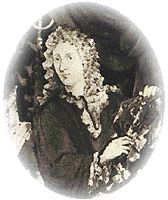

André-Charles Boulle
1642 - 1732
Boulle was a French cabinetmaker who gained the title of Ebéniste Ciseleur et Marqueteur du Roi. He is generally considered to be the preeminent artist in the field of marquetry as is demonstrated in the giving of his name to the technique he perfected of inlaying gilt brass and tortoise-shell amongst other rare materials.
Text © Wallace Collection, 2017


























